News
Money from the Inflation Reduction Act aims to bolster forest farming in southeast Ohio
By: Theo Peck-Suzuki | Report for America
Posted on:
BLUE ROCK, Ohio (WOUB/Report for America) — Kaleb Wilkins grew up around kids whose dream was to escape Appalachia.
“Kids that I went to school with, everybody wanted to grow up and get out of here. Like, there’s nothing here, why are we gonna stay here? You can’t make any money doing anything,” he recalled.
Members of Wilkins’ family have lived in Blue Rock for generations. Between them, they own almost 200 acres of forest. Now, Wilkins is turning that land into a source of renewable income through the cultivation of non-timber forest products — primarily herbs like ginseng and blue cohosh, which fetch substantial prices at market.
Wilkins, who also works as a nurse practitioner specializing in substance use disorder, hopes his work shows others the value of staying in Appalachia.
“Why do you need to go outside of here to go make money when you can really stay in your community and make it a better place to live?” he asked.
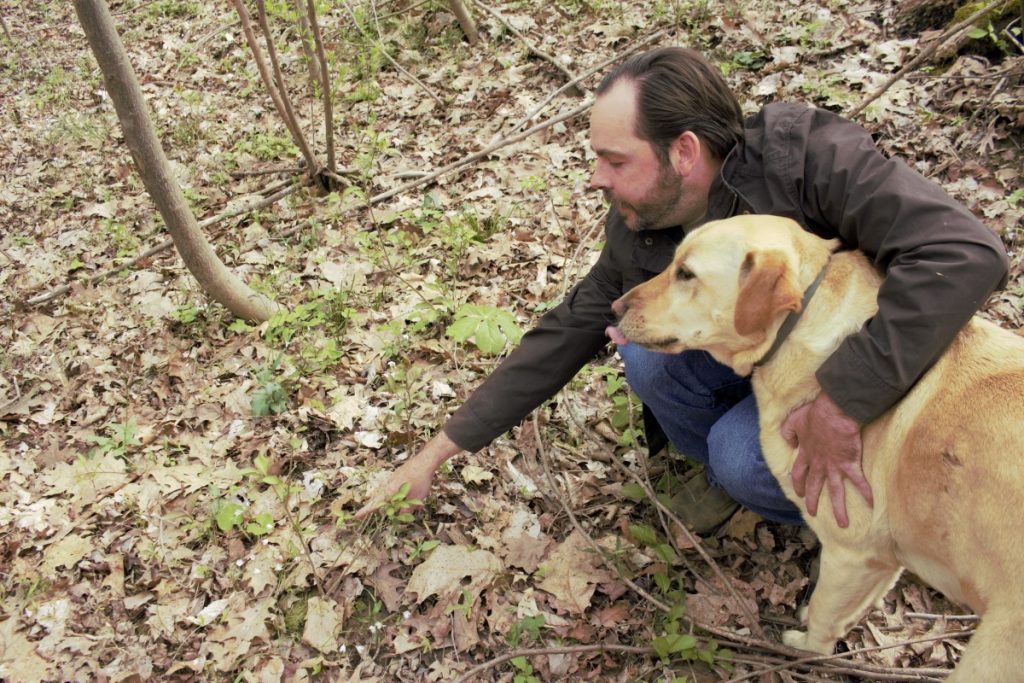
“It was invaluable,” Wilkins said.
The program Wilkins participates in recently got a major boost through a $6 million partnership with the U.S. Forest Service. The money comes from the federal Inflation Reduction Act, which pledged massive funding to combat climate change by making the U.S. economy greener. In this case, that means giving landowners the training and tools to make money from their forests — without chopping them down.
People in Appalachian Ohio have traditionally turned to timber to make money from their forests. While this can provide a cash infusion when money is tight, it also removes trees that would otherwise absorb planet-warming carbon gasses. Non-timber products provide an alternative cash source from that same land and give landowners a reason to keep forests intact.
The uses for such products vary, but in general, they are valued for their health benefits. For example, Wilkins said one of the plants he’s growing, blue cohosh, is popular for treating menopause. Another plant, ramp — which is similar to garlic — is more attractive as a cooking ingredient.
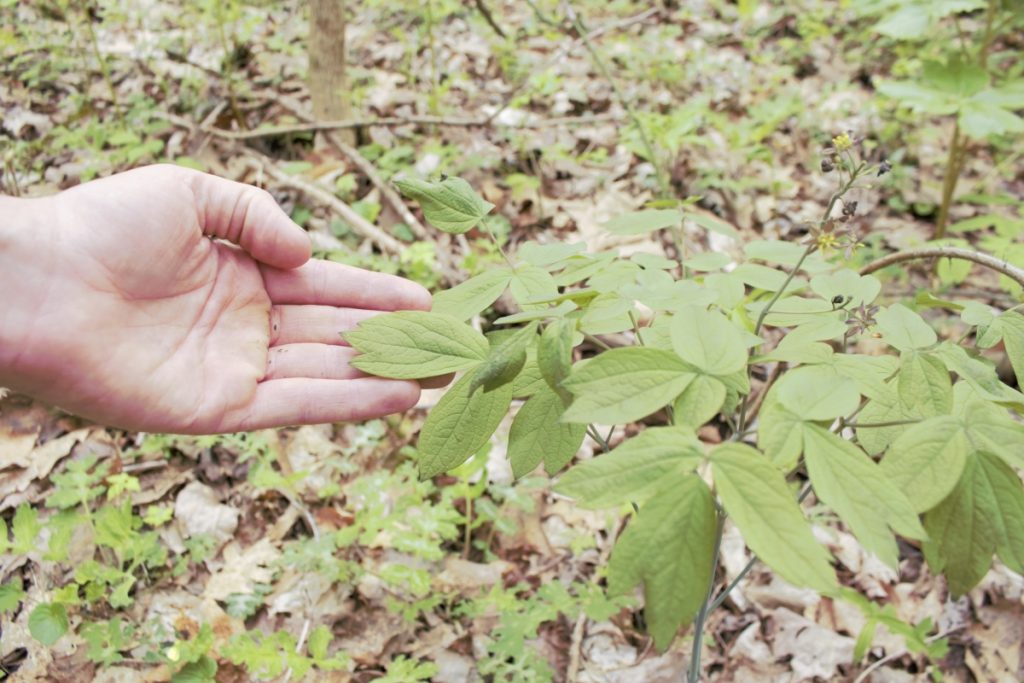
Once the seeds are spread, it’s just a matter of waiting. Unlike traditional agriculture, nature takes care of pretty much everything else. There’s no need for irrigation systems, fertilizer or any of the other treatments associated with mainstream farming.
That’s one reason forest farming may be attractive to people who already have a demanding full-time job.
With the new IRA funding, Rural Action hopes to expand the program’s outreach and solve one of the main challenges for growers: namely, getting herbs to market. Part of the plan is to establish an “herb hub,” likely based out of ACEnet in Nelsonville, where growers can take harvested herbs to process.
“We’ll have a dehydrator for drying things. We’ll have a root washer for like, if you have ginseng roots, you can bring ’em in and wash ’em, dry ’em and sell ’em,” said Rural Action Chief Program Officer Joe Brehm.
Trees, carbon and climate change
The reason forest preservation is tied to climate change stems from the fundamental reason the climate is changing: an excess of heat-trapping carbon gasses in the atmosphere.
During the industrial revolution, people discovered they could burn carbon compounds like coal, oil and natural gas — fossil fuels — to create electricity. Virtually every convenience of modern life is built on this discovery. However, burning fossil fuels also releases carbon gasses, primarily carbon dioxide, into the atmosphere. Therein lies the problem.
At this point, humans have burned so much coal, oil and gas that we’ve changed the balance of the Earth’s carbon: much more is in the air, and much less is in the ground. Carbon in the air traps heat, and that means the planet is warming far faster than it would without industrial carbon-burning human activity. The extra heat warps the weather in extreme ways, causing droughts in some regions and flooding in others. Experts say the consequences, if left unchecked, could be catastrophic.
That’s where trees come in.
“A mature tree will put on about 200, 220 pounds of carbon in a year,” Brehm said. That’s carbon the tree pulls out of the atmosphere.
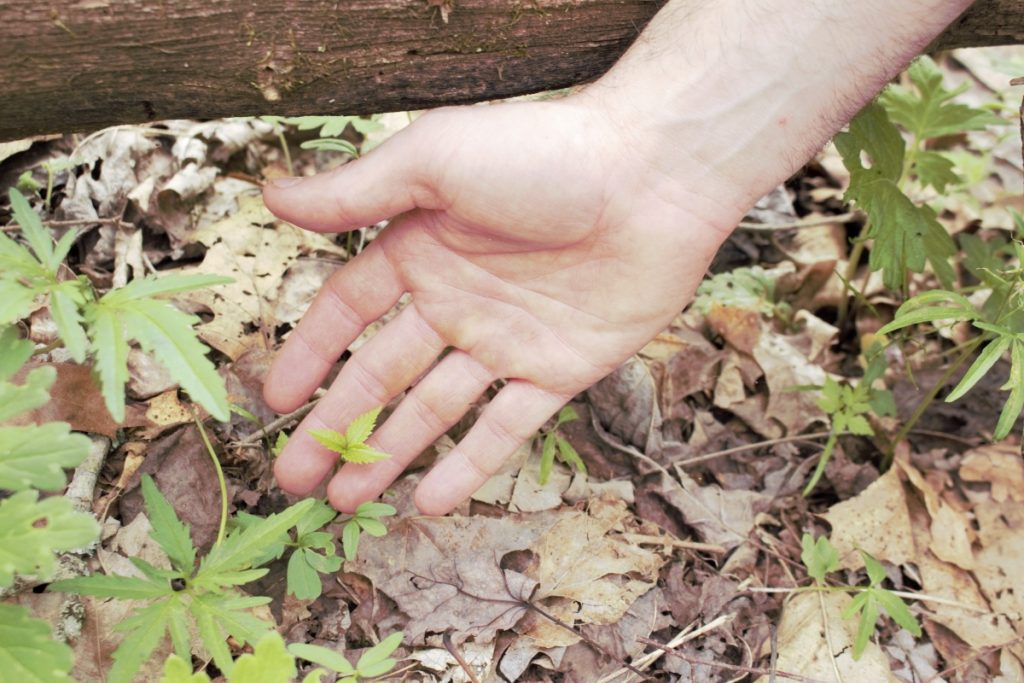
Even so, humans also need to change how they produce electricity.
“There will be a point, if we stay on our current trajectory (of burning fossil fuels), where planting trees is no longer an effective solution,” Brehm explained. There will just be too much carbon gas in the atmosphere for trees alone to absorb.
Nevertheless, Brehm believes protecting and expanding forests is part of the broader climate-saving strategy.
Forest farming makes a market case for keeping trees
Traditionally, preserving forests has involved complex legal documents known as easements, which prohibit development on land. These documents require enforcement, which means legal fees.
Morgan Hager, one of the up-and-coming forest farmers working with Rural Action, said that made putting an easement on her property unfeasible. But the non-timber forest products she’s growing give her a market-driven reason to keep her trees around.
“If you have something in the understory that you can get like, $400 a pound for, then, if we’re only talking economics, it doesn’t make sense to cut your trees,” Hager said.
Hager said she’s planning to grow goldenseal and elderberries on her property, both of which are valued for combating various diseases. It’s not just about the money, though.
“In my mind, it’s just a way more direct, more organic way to get people to see the value in the whole ecosystem, because you have to or you can’t grow this stuff,” Hager said.
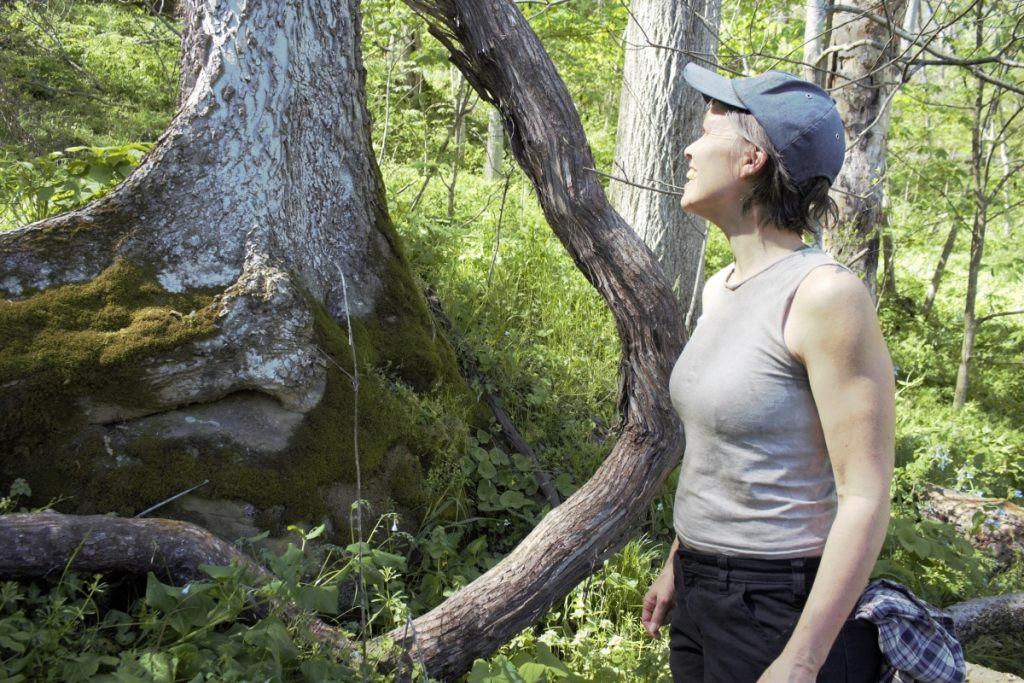
“When I learned more and more about forest farming, it just opened up so much,” she said.
Hager said she also toured her property with Rural Action’s Andrea Miller to identify good growing spots. She said the knowledge she’s gained about the plants in her woods has had a direct impact on her body.
“I’ve been recently on this kick learning about mineral deficiencies in us (humans). But of course it’s that way, because most of the crops that we eat are grown in mineral-deficient, like zero-mineral (soil),” Hager said.
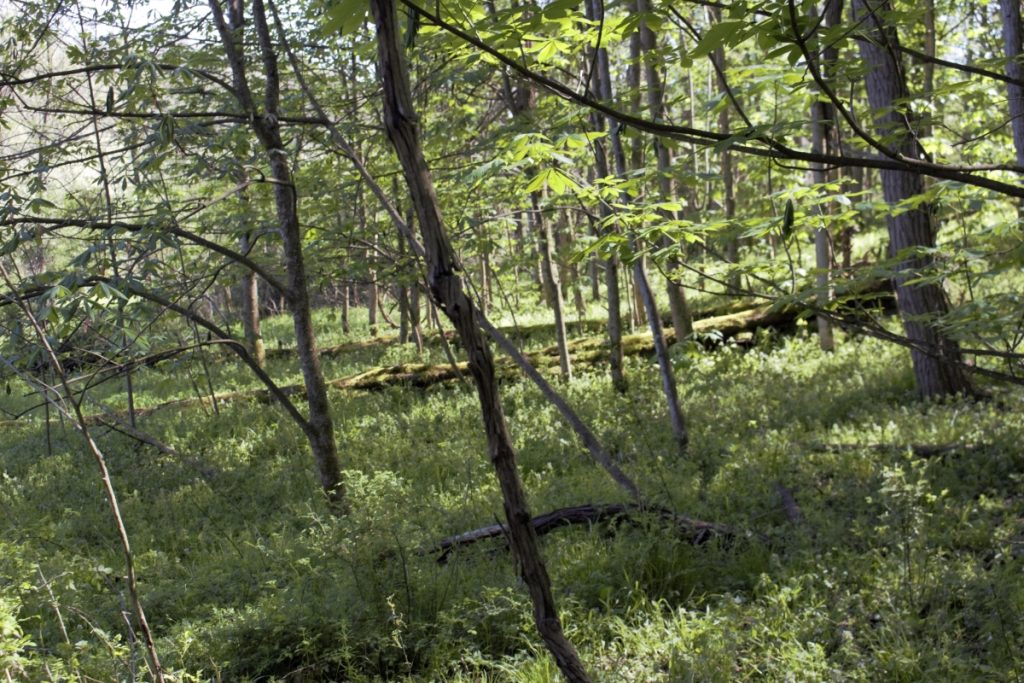
“Mix this in a big blender with a couple other things and some violet leaf, and let it sit overnight and strain it, and it’s … If I had this all the time, I think I wouldn’t be having as many of the health problems as I have,” she said.
It will be a while before the seeds Hager sows become plants ready to harvest — two years for goldenseal if she sells it as planting stock, longer if she wants to harvest the root, and even longer than that for the chestnuts currently growing elsewhere on her property. The plan, though, is to one day make a living from forest farming.
“This stuff doesn’t happen fast,” she said.

